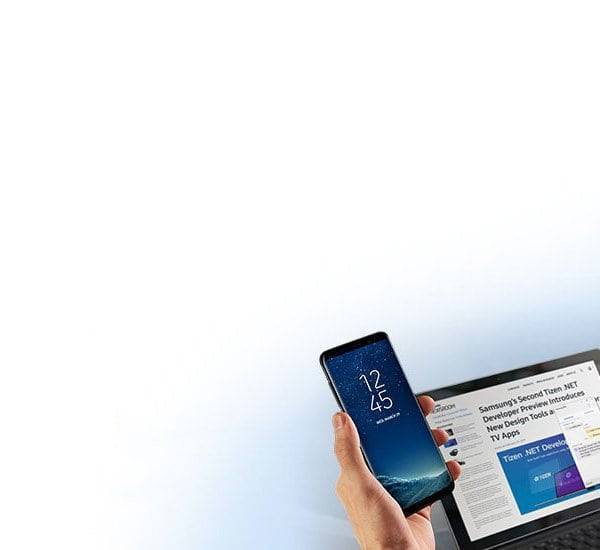The new Samsung Galaxy J4+ and Galaxy J6+ are extremely similar, and in fact they feel like they’re just two variants of the same device. The two phones are practically identical in terms of design. The only external differences are that the Galaxy J6+ has two cameras on its back, and a wide, sunken power button with an integrated fingerprint sensor on its right, while the Galaxy J4+ has a single rear camera and ordinary power button. They are both available in blue and black, but gold is exclusive to the Galaxy J4+ while the Galaxy J6+ gets a bold red instead, other than these things, it’s impossible to tell the two models apart. Both have exactly the same dimensions and feel the same in terms of weight.
Both the Galaxy J4+ and Galaxy J6+ feature 18.9:5 screens, Samsung calls it Infinity Displays even though the sides of these phones aren’t curved and there are still substantial borders above and below. The glass on the front and rear is slightly rounded, and both are quite slippery. On the left of each phone, you’ll find individual volume buttons as well as two trays, one for a single Nano-SIM, and a larger one for a second Nano-SIM as well as a microSD card. This means that you don’t have to choose between a second SIM and more storage. Both phones have 3.5mm audio sockets and Micro-USB ports on the bottom, and nothing on the top. For loudspeakers, there are tiny slits on the upper right of each phone, and we noticed that these tended to pick up quite a lot of pocket lint over the course of a few days.
The Galaxy J4+ doesn’t have a fingerprint sensor at all, and its stubby little power button is placed a little too high. The sensor on the Galaxy J6+ takes quite a bit of getting used to because it’s integrated into the power button on the side and is completely flush with the body in a very subtle recess. The positioning will not be very convenient for left-handed people.
The screens on both phones measure 6 inches diagonally with resolutions of 720×1480. They’re both bright and vivid despite not using OLED panels like Samsung’s more expensive models, but they do suffer slightly in terms of sharpness. The Galaxy J4+ has 2GB of RAM and 32GB of storage, and the Galaxy J6+ has 4GB of RAM and 64GB of storage. Interestingly, microSD support goes up to 512GB. Both phones have the same 3300mAh battery, but there’s no quick charging even though the processor used supports Qualcomm Quick Charge 2.0. VoLTE is supported on both phones, but 4G can only be active through one SIM at a time.
Other features include Wi-Fi 802.11n, Bluetootoh 4.2, GPS, GLONASS, a gyro sensor and a light sensor which is not in the Samsung J6. Samsung has stated clearly that both phones are Widevine L1 DRM certified to support HD video streaming. Samsung Galaxy J4+ and Galaxy J6+ run on Android 8.1
There’s a lot to find within each phone’s Settings app. You can choose to reorder the navigation buttons or hide them and swipe upwards in each one’s place to trigger their actions. New with the Galaxy J4+ and Galaxy J6+ is an Emotify feature, integrated into Samsung’s keyboard. Another challenge is that with two SIMs inserted, Samsung’s SMS app will show two tiny send buttons right next to one another, one has to be very careful about which one you’re were hitting when sending messages.
While Samsung’s official spec sheet explicitly states that neither of these phones supports face recognition, we saw the option to set it up in both of their Settings apps. There’s a warning that it isn’t as secure as a pattern or PIN, and that “someone or something that looks like your image” could be able to unlock these phones. The registration process took unusually long on both, and there was some lag when trying to actually use recognition, but it did work almost every time we used it.
The Galaxy J4+ has a single 13-megapixel camera on the rear, while the Galaxy J6+ has an additional 5-megapixel depth sensor and a Live Focus mode in its camera app. It also has a Social Camera mode that lets you quickly broadcast photos and clips to social media. In all other respects, including the app UI, both phones’ cameras are identical.





